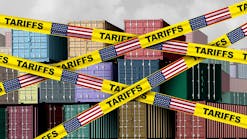Powerplant and substation electrical staff are very familiar with sulfur hexafluoride or SF6 which is a common insulating gas used in electrical equipment like electrical switches and circuit breakers. For many decades, SF6 has been the go-to dielectric insulating material for high-voltage electrical systems installed in enclosed spaces. The reasons include its high electrical insulating properties, non-flammability, non-toxicity, low maintenance, and competitive cost. However, SF6 also exhibits an extremely high global warming potential (GWP), which is a red flag today, so what is the back story and what are the options for utilities, if any?
SF6 gas has been used extensively since the mid 1950s to replace oil as an insulator in electric equipment, and more recently in gas insulated switchgear (GIS) and gas insulated lines (GIL). It is also used in medium voltage switchgear primarily outside the United States and extensively worldwide in low switching capacity gear. It has a higher dielectric strength than air or dry nitrogen insulating alternatives leading to more compact equipment sizes. Gas insulated equipment is also more resistant to air contaminants and weather effects, increasing its longevity. While SF6 breaks down chemically when exposed to an arc, most of the altered material reforms or self-heals as SF6.
As mentioned above, SF6 has come under fire as a potent greenhouse gas (GHG). Gases that trap heat in the atmosphere are referred to as GHGs and are believed to contribute to the normal global warming and cooling cycles that occur. SF6 is a member of the GHG group of compounds known as fluorinated gases. While fluorinated gases made up only 3% of the GHG emissions in 2017, they are a concern because of their high GWP. GWP is a calculation of how long the GHG remains in the atmosphere relative to carbon dioxide (CO2) and how strongly it absorbs infrared radiation (energy). Gases with a higher GWP absorb more radiation than those with a lower GWP and thereby are believed to cause more warming of the earth. According to the Intergovernmental Panel on Climate Change (IPCC), SF6 has a GWP of 23,900 times that of CO2 based on a 100-year horizon and an atmospheric lifetime of 3200 years. This makes SF6 the most potent GHG.
There is disagreement regarding the climate impact of the SF6 used in the electric industry. Ever since the GWP of SF6 was recognized, the domestic power industry has made careful recordkeeping, leak prevention, and recycling a priority. In addition, all use in the power industry is intended to be in closed systems. Other uses of SF6 in metallurgy, electronics manufacturing, the medical industry, and several consumer products accounts for most of the losses. Ironically, the largest source of fluorinated gas emissions is from products intended to replace chlorofluorocarbons (CFCs) and hydrochlorofluorocarbons (HCFCs), used widely as refrigerants, because they cause another atmospheric problem — stratospheric ozone depletion. Stratospheric ozone is what helps protect the earth from harmful ultraviolet (UV) light.
Even though FG emissions from electric transmission and distribution account for a small percentage of the overall emissions, monitoring indicates SF6 concentrations in the atmosphere are increasing. Some researchers attribute this increase to the large growth in distributed energy resources (DERs) which contain SF6 insulated equipment and may not have the resources to maintain the equipment effectively or the growth in equipment numbers is simply leading to more unavoidable accidents resulting in discharges. In either event, this raises the question of whether there are any viable alternatives to using SF6 in electrical equipment.
Equipment manufacturers have been conducting research for years to find a more environmentally friendly, but equally effective substitute for SF6 use in high and medium voltage switchgear. A gas mixture prepared using a product called Novec 5110 dielectric fluid appears to meet all the required characteristics that make SF6 so attractive. Novec 5110, a perfluorinated ketone with five carbon atoms (C5 PFK), is mixed with different gas combinations for HV and MV switchgear. An informative article describing its initial use in equipment developed by ABB for Swiss utility EWZ can be found here.
Eaton manufactures a “Green Switching” line of MV switchgear without SF6 that relies on vacuum technology and solid insulation. The company claims equipment performance and compactness is as good as SF6 insulated equipment and users do not have to contend with the regulatory restrictions, procedures, and precautions that impact SF6 insulated equipment during production, use, maintenance, and end-of-life equipment handling.
GE has announced a line of SF6 free HV equipment that uses a product named g³ (green gas for grid), based on a 3M Novec compound. The product has been tested for live-tank circuit breakers and gas insulated substations up to 145 kV, gas insulated lines up to 420 kV, and instrument transformers up to 245 kV. GE’s g³ is currently being demonstrated at 19 international installations.
Despite the growing number of demonstration projects for SF6 free MV and HV equipment, many industry experts continue to argue there are an insufficient number of SF6 alternatives for certain applications and the track records for the available alternatives are too limited to ban SF6. Because of its performance record on the job and, as some would argue, the conservative nature of the utility industry, it is likely the judicious use of SF6 with careful closed-loop handling and full recycling upon equipment retirement will continue for now. Concurrently, we will continue to build the track record for SF6 substitutes and continue to look for new alternatives as Enel did last year with a vendor RFP.


